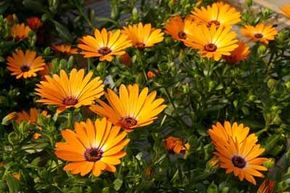The African daisy is a remarkable addition to any garden, offering a blend of aesthetic beauty, diversity, and ease of care. These flowers not only bring a burst of color to your outdoor space but also allow gardeners, whether novices or experts, to experiment with various gardening styles. From creating vibrant borders and mixed beds to enhancing container gardens, the African daisy is versatile.
Their relatively straightforward care requirements make them a joy to cultivate. By providing the right soil, ample sunlight, and regular watering, these plants will reward you with a long-lasting display of blooms. Regular maintenance, including deadheading and monitoring for pests, will keep your African daisies healthy and vibrant.
The African daisy is more than just a plant; it's a testament to the beauty and diversity of nature. Its ability to adapt to different environments and its stunning variety of colors make it a favorite among gardeners worldwide. As you embark on your gardening journey, consider the African daisy as a symbol of joy and resilience, a flower that not only beautifies your garden but also enriches your experience as a gardener.
This article was updated in conjunction with AI technology, then fact-checked and edited by a HowStuffWorks editor.
